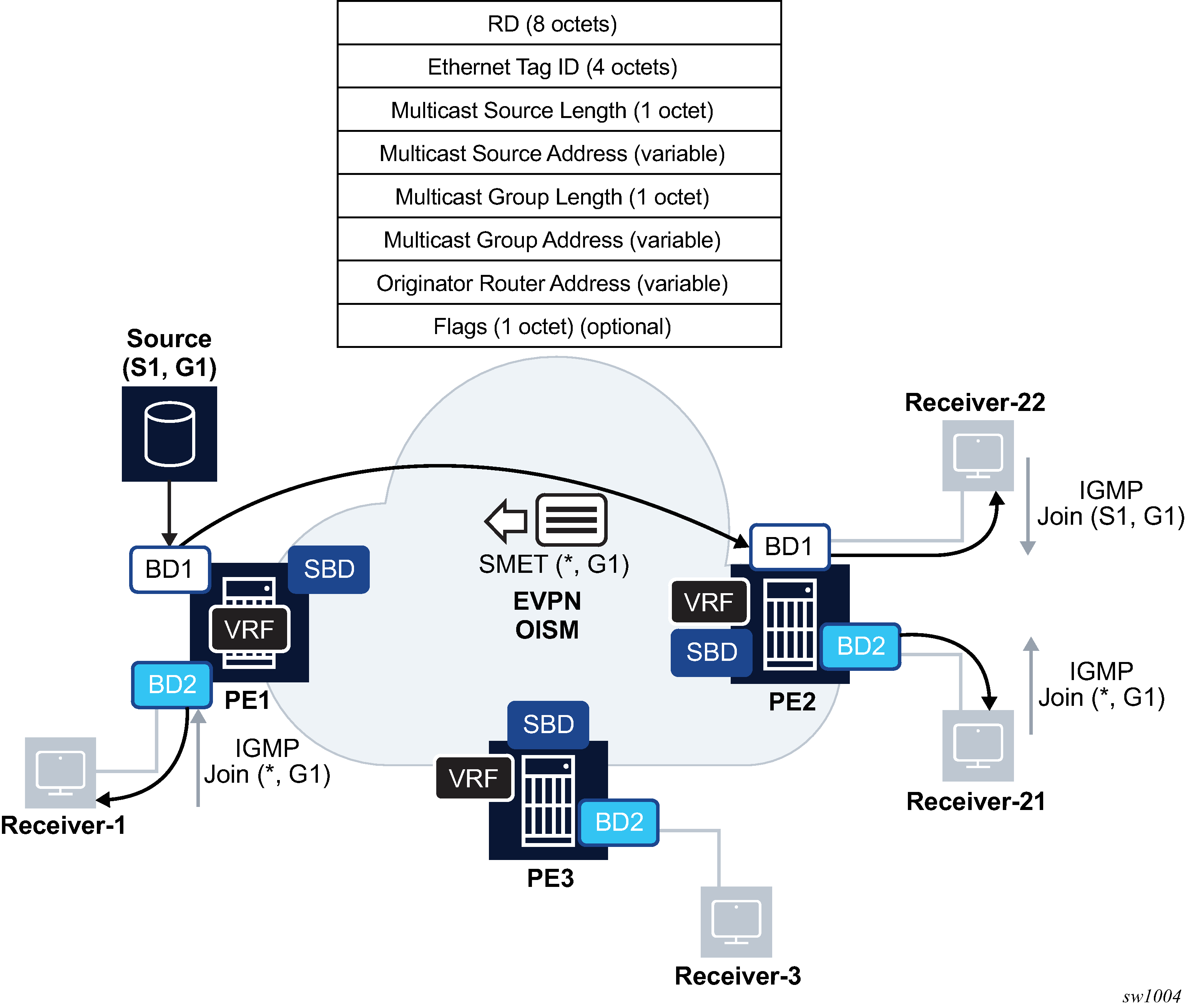OISM uses the Selective Multicast Ethernet Tag (SMET) route or route type 6 to signal interest on a specific (S,G) or (*,G). Figure: Use of the SMET route provides an example.

As shown in Figure: Use of the SMET route, a PE with local receivers interested in a multicast group G1 issues an SMET route encoding the source and group information (upon receiving local IGMP join messages for that group). EVPN OISM uses the SMET route in the following way:
A route type-6 (SMET) can carry information for IPv4 or IPv6 multicast groups, for (S,G) or (*,G) or even wildcard groups (*,*).
Note: MVPN uses different route types or even families to address the different multicast group types.The SMET routes are advertised with the route-target of the SBD, that guarantees that the SMET routes are imported by all the PEs of the tenant.
The SMET routes also help minimize the control plane overhead because they aggregate the multicast state created on the downstream PEs. This is illustrated in Figure: Use of the SMET route, where PE2 sends the minimum number of SMET routes to pull multicast traffic for G1. That is, if PE2 has state for (S1,G1) and (*,G1), the SMET route for (*,G1) is enough to attract the multicast traffic required by the local receivers. There is no need to send an SMET route for (S1,G1) and a different route for (*,G1). Only (*,G1) SMET route is advertised.
The SMET routes also provide an "implicit" S-PMSI (Selective Provider Multicast Service Interface) tree. That is, PE1 sends the multicast traffic only to the PEs requesting it, for example, PE2 and not to PE3. In MVPN, even for Ingress Replication, a separate S-PMSI tree is setup to avoid PE1 from sending multicast to PE3.